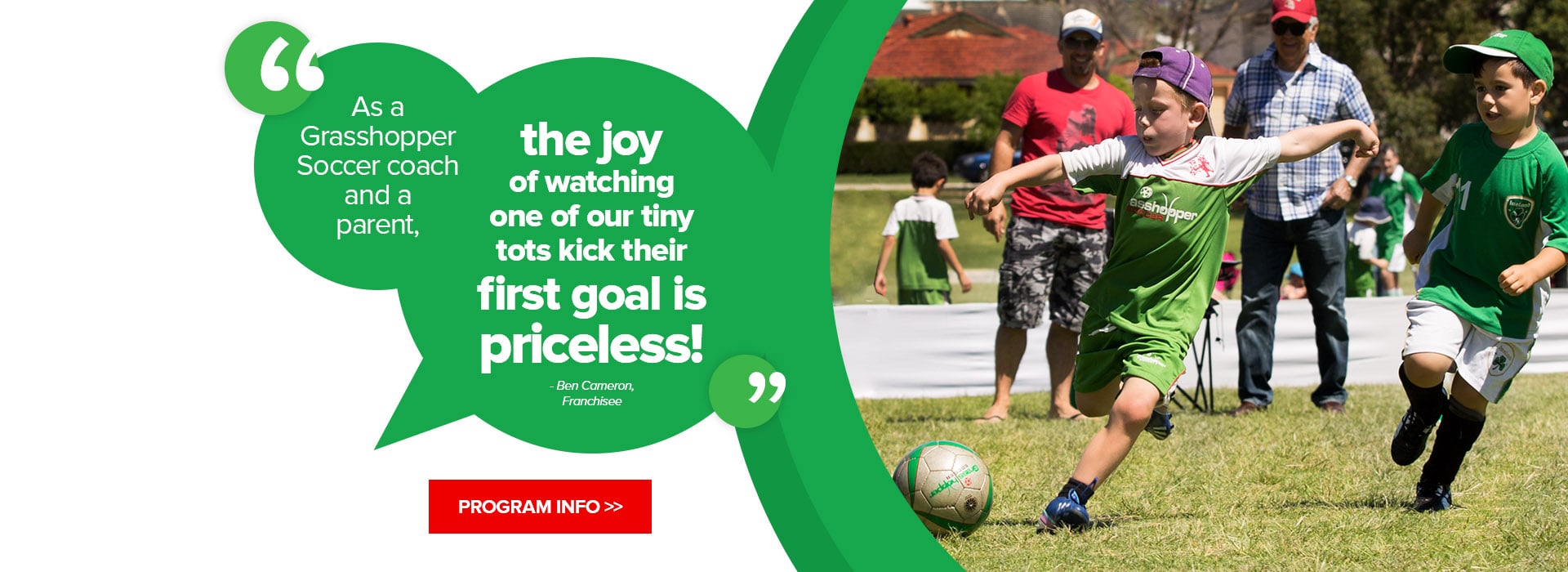Grasshopper Indoor Soccer: The Ultimate Guide To Playing, Training, And Competing
Grasshopper indoor soccer has become an increasingly popular sport worldwide, offering a dynamic and fast-paced alternative to traditional soccer. Played in enclosed arenas, this sport emphasizes speed, skill, and teamwork, making it an exciting choice for players and spectators alike. The growing interest in grasshopper indoor soccer is driven by its unique gameplay, which combines elements of futsal and soccer while introducing new challenges and opportunities.
Indoor soccer is not just a game; it's a way to improve fitness, enhance coordination, and foster camaraderie among players. Whether you're a seasoned soccer enthusiast or a beginner looking to try something new, grasshopper indoor soccer offers something for everyone. This article will delve into the nuances of the sport, covering everything from the basics to advanced techniques.
Join us as we explore the world of grasshopper indoor soccer, including its history, rules, training tips, and competitive opportunities. By the end of this guide, you'll have a comprehensive understanding of what makes this sport so thrilling and why it continues to captivate players globally.
Read also:Too Short Age Understanding The Challenges And Solutions
Table of Contents
- The History of Grasshopper Indoor Soccer
- Understanding the Rules of Grasshopper Indoor Soccer
- Benefits of Playing Grasshopper Indoor Soccer
- Essential Equipment for Grasshopper Indoor Soccer
- Training Tips for Grasshopper Indoor Soccer
- Competitive Grasshopper Indoor Soccer
- Common Injuries and Prevention in Grasshopper Indoor Soccer
- Nutrition for Grasshopper Indoor Soccer Players
- Building a Grasshopper Indoor Soccer Community
- The Future of Grasshopper Indoor Soccer
The History of Grasshopper Indoor Soccer
Grasshopper indoor soccer originated as a variation of traditional soccer, designed to adapt to indoor environments. While the exact origins of the sport are debated, many believe it evolved from futsal, which was first played in Uruguay in the 1930s. Over time, grasshopper indoor soccer developed its own set of rules and gameplay dynamics, distinct from both futsal and outdoor soccer.
In the 1980s, the sport began to gain traction in North America, where it was played in converted hockey arenas and gymnasiums. The smaller field size and enclosed environment created a faster-paced game that required players to adapt their skills and strategies. Today, grasshopper indoor soccer is played worldwide, with leagues and tournaments attracting players of all ages and skill levels.
Evolution of Grasshopper Indoor Soccer
The evolution of grasshopper indoor soccer has been marked by several key developments, including:
- Adoption of specialized rules tailored to indoor play
- Introduction of smaller, lighter balls for better control
- Development of training programs focused on agility and quick reflexes
- Establishment of professional leagues and international competitions
Understanding the Rules of Grasshopper Indoor Soccer
Grasshopper indoor soccer follows a set of rules designed to ensure fair play and maximize excitement. These rules differ significantly from those of outdoor soccer, reflecting the unique challenges and opportunities of indoor play. Below are some of the most important rules to keep in mind:
Key Rules of Grasshopper Indoor Soccer
- Teams consist of six players, including the goalkeeper
- Games are typically played in two 25-minute halves
- Substitutions are allowed at any time, without interruptions
- Offside rules do not apply
- Players can use the walls to pass or deflect the ball
Benefits of Playing Grasshopper Indoor Soccer
Playing grasshopper indoor soccer offers numerous benefits, both physical and mental. The sport is an excellent way to improve cardiovascular health, build muscle strength, and enhance coordination. Additionally, the fast-paced nature of the game helps develop quick thinking and decision-making skills.
Physical Benefits of Grasshopper Indoor Soccer
Regular participation in grasshopper indoor soccer can lead to:
Read also:March 6 Birthdays Celebrating The Lives Of Remarkable Individuals
- Improved cardiovascular endurance
- Increased muscle strength and flexibility
- Enhanced balance and agility
- Better coordination and reflexes
Mental Benefits of Grasshopper Indoor Soccer
Grasshopper indoor soccer also provides mental benefits, such as:
- Stress relief through physical activity
- Improved focus and concentration
- Development of teamwork and communication skills
- Boosted self-confidence and motivation
Essential Equipment for Grasshopper Indoor Soccer
To play grasshopper indoor soccer effectively, you'll need the right equipment. This includes specialized footwear, clothing, and protective gear designed for indoor play. Below is a list of essential items:
Key Equipment for Grasshopper Indoor Soccer
- Indoor soccer shoes with flat soles for better traction
- Lightweight, breathable jerseys and shorts
- Shin guards for protection during play
- A high-quality indoor soccer ball
Training Tips for Grasshopper Indoor Soccer
Training for grasshopper indoor soccer requires a combination of skill development, physical conditioning, and strategic planning. Here are some tips to help you improve your game:
Improving Skills in Grasshopper Indoor Soccer
- Practice dribbling and ball control regularly
- Focus on improving passing accuracy and speed
- Develop shooting techniques for different situations
Physical Conditioning for Grasshopper Indoor Soccer
- Incorporate cardio exercises to boost endurance
- Engage in strength training to build muscle power
- Stretch regularly to improve flexibility and prevent injuries
Competitive Grasshopper Indoor Soccer
For those looking to take their grasshopper indoor soccer skills to the next level, competitive play offers numerous opportunities. From local leagues to international tournaments, there are plenty of ways to challenge yourself and test your abilities against other players.
Joining a Grasshopper Indoor Soccer League
Joining a league is a great way to get involved in competitive play. Look for local leagues in your area and consider joining a team that matches your skill level. Many leagues offer both recreational and competitive divisions, allowing players to progress at their own pace.
Common Injuries and Prevention in Grasshopper Indoor Soccer
Like any sport, grasshopper indoor soccer carries the risk of injury. However, many injuries can be prevented with proper preparation and precautions. Below are some common injuries and tips for avoiding them:
Common Injuries in Grasshopper Indoor Soccer
- Ankle sprains from sudden movements
- Knee injuries from collisions or overuse
- Strains and pulls from intense physical activity
Preventing Injuries in Grasshopper Indoor Soccer
- Warm up properly before playing
- Use appropriate protective gear during games
- Stay hydrated and take breaks as needed
Nutrition for Grasshopper Indoor Soccer Players
Proper nutrition is essential for peak performance in grasshopper indoor soccer. Players should focus on consuming a balanced diet that provides the necessary energy and nutrients for intense physical activity. Key components of a healthy diet for soccer players include:
Recommended Foods for Grasshopper Indoor Soccer Players
- Complex carbohydrates for sustained energy
- Lean proteins for muscle repair and growth
- Fruits and vegetables for vitamins and minerals
Building a Grasshopper Indoor Soccer Community
Creating a strong community around grasshopper indoor soccer can enhance the experience for players and fans alike. By fostering connections and encouraging participation, you can help grow the sport and create lasting friendships.
Ways to Build a Grasshopper Indoor Soccer Community
- Organize local events and tournaments
- Create online groups for players to share tips and experiences
- Collaborate with schools and community centers to promote the sport
The Future of Grasshopper Indoor Soccer
The future of grasshopper indoor soccer looks bright, with increasing interest and participation worldwide. Advances in technology and training methods are likely to enhance the sport further, while growing awareness of its benefits will attract more players and fans.
As the sport continues to evolve, it's important for players, coaches, and organizers to stay informed about the latest developments and trends. By embracing innovation and collaboration, the grasshopper indoor soccer community can ensure a thriving future for the sport.
Conclusion
Grasshopper indoor soccer is a dynamic and exciting sport that offers countless benefits for players of all ages and skill levels. From its rich history and unique rules to its physical and mental advantages, this sport has something to offer everyone. By following the tips and advice outlined in this guide, you can improve your skills, stay safe, and enjoy the many rewards of playing grasshopper indoor soccer.
We invite you to share your thoughts and experiences in the comments below. Have you tried grasshopper indoor soccer? What aspects of the game do you enjoy the most? Don't forget to explore our other articles for more insights into the world of sports and fitness!


